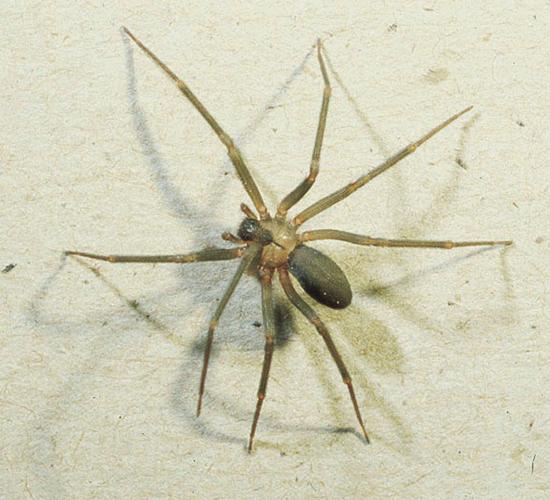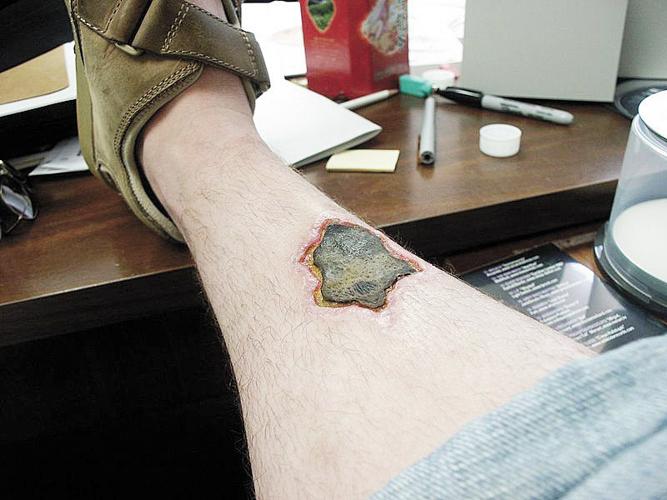If you live in Oklahoma, there are probably brown recluse spiders in your house, according to Scott Schaeffer, managing director of the Oklahoma Poison Center.
Schaeffer said living with brown recluse spiders, or “fiddlebacks,” is not necessarily something to cause worry.
Bites are rare, with only one case being reported in Cherokee County this year and 45 in the entire state. There have been 28 reports of black widow spider bites in Oklahoma in 2014, none of which were in Cherokee County.
“Our data is kind of sketchy,” said Schaeffer.
He said the Poison Center’s numbers only reflect the number of spider bites reported, which is not necessarily accurate.
“Rural people tend to not get as worked up about them,” said Schaeffer.
Schaeffer does not think people necessarily should get worried about bites, though they do need to be watched in case they do become serious.
Bites from fiddlebacks do not often hurt and can go unnoticed. Brown recluse bites will look like a reverse bull’s-eye, with a white area in the center surrounded by a red ring.
People report multiple reactions from bites. Schaeffer indicated the most immediate reaction is a potential allergic reaction, with swelling and difficulty breathing. While this reaction is much more common with bee stings than spider bites, it is still possible.
“Then it’s time to call an ambulance,” said Schaeffer. “That can happen with poisonous or not poisonous spiders.”
For other reactions, the only way to know if a person will be affected is time.
“There really isn’t anything we can do about it,” said Schaeffer.
He said while they do recommend basic first aid procedure, which includes washing the bite with soap and water, there is no anti-venom for brown recluse or black widow bites.
Most home remedies end up making the problem worse, and heating the area just makes the venom spread faster, which results in greater scarring if there is a reaction.
“I would say less than 50 percent of people who get bitten need to go in for medical attention,” said Schaeffer.
The three different reactions to fiddleback bites range in their severity.
One result can be poison affecting the body like having the flu, called serum sickness. The second result is a bad skin reaction, with skin blackening and rotting away.
“The skin just dies,” said Schaeffer.
The medical term for this is necrosis, and it occurs with multiple diseases and infections.
Schaeffer said people with this reaction need to seek medical attention, though doctors cannot stop or contain the dying skin tissue; they just try to keep it clean to prevent further infection.
The last and most unusual reaction to a brown recluse bite is a condition called hemolysis, when red blood cells begin to break down in the body.
Schaeffer said the urine of a person with this condition will look like “dark cola,” and they need to a doctor right away if they have this symptom.
Black widow bites are also dangerous, but also have about the same percentage of people who need to seek medical attention resulting from their bite.
“They zap you pretty hard,” said Schaeffer.
Unlike with the brown recluse, people usually know when they have been bitten by a black widow.
The symptom to look for with black widow bites is muscle cramps.
“It starts in your abdomen, then moves out to your arms and legs,” said Schaeffer.
Schaeffer still said anyone who has been bitten should wait and see the reaction before rushing to a doctor’s office. Even if there is a mark similar to a spider bite and some symptoms form, it might not be a bite.
“People want to call everything is a spider bite,” said Schaeffer.
He said most people who believe they have been bitten by a spider turn out to have a staff infection or another similar ailment, though these infections also call for medical attention.




















Commented
Sorry, there are no recent results for popular commented articles.